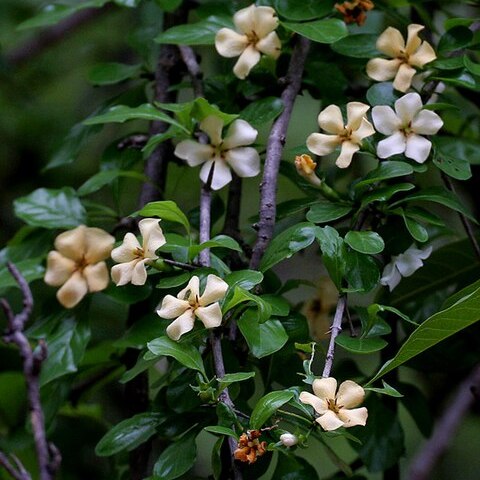| Therapeutic use
|
Abortifacient agents (bark), Analgesics (bark), Anthelmintics (bark), Anti-infective agents, local (bark), Antineoplastic agents (bark), Antirheumatic agents (bark), Antiviral agents (bark), Astringents (bark), Constipation (bark), Contusions (bark), Diarrhea (bark), Dysentery (bark), Earache (bark), Emetics (bark), Fever (bark), Hypnotics and sedatives (bark), Pain (bark), Wounds and injuries (bark), Abdominal pain (bark), Gastritis (bark), Skin diseases (bark), Antifungal agents (flower), Abortifacient agents (fruit), Acne vulgaris (fruit), Hair loss (fruit), Amenorrhea (fruit), Analgesics (fruit), Anthelmintics (fruit), Anti-bacterial agents (fruit), Antifungal agents (fruit), Anti-inflammatory agents (fruit), Antineoplastic agents (fruit), Antipyretics (fruit), Antirheumatic agents (fruit), Antiviral agents (fruit), Asthma (fruit), Bronchitis (fruit), Colic (fruit), Common cold (fruit), Constipation (fruit), Contraceptive agents (fruit), Cough (fruit), Dandruff (fruit), Diarrhea (fruit), Dysentery (fruit), Dysmenorrhea (fruit), Edema (fruit), Emetics (fruit), Expectorants (fruit), Fever (fruit), Fishes, poisonous (fruit), Flatulence (fruit), Furunculosis (fruit), Gout (fruit), Headache (fruit), Helminthiasis (fruit), Hemolysis (fruit), Herpes simplex (fruit), Hypnotics and sedatives (fruit), Hypoglycemic agents (fruit), Hypohidrosis (fruit), Hysteria (fruit), Immunomodulation (fruit), Infection (fruit), Inflammation (fruit), Insecticides (fruit), Ipecac (fruit), Leprosy (fruit), Menstruation-inducing agents (fruit), Molluscacides (fruit), Neoplasms (fruit), Nervous system diseases (fruit), Parasympatholytics (fruit), Pneumonia (fruit), Skin diseases (fruit), Sprains and strains (fruit), Tooth diseases (fruit), Ulcer (fruit), Vomiting (fruit), Wound healing (fruit), Wounds and injuries (fruit), Diaphoretic (fruit), Depurative (fruit), Abdominal pain (fruit), Dysentery, amebic (fruit), Snake bites (leaf), Wounds and injuries (leaf), Constipation (plant exudate), Abdominal pain (root), Anthelmintics (root), Antiviral agents (root), Chest pain (root), Contraceptive agents (root), Cough (root), Fishes, poisonous (root), Furunculosis (root), Gonorrhea (root), Herpes simplex (root), Insect repellents (root), Insecticides (root), Intestinal diseases, parasitic (root), Respiratory tract infections (root), Snake bites (root), Urologic diseases (root), Menstruation disturbances (root), Analgesics (seed), Anthelmintics (seed), Anti-inflammatory agents (seed), Appetite stimulants (seed), Arthritis (seed), Infertility (seed), Menstrual cycle (seed), Antirheumatic agents (stem), Wounds and injuries (stem), Adenopathy (unspecified), Convulsion (unspecified), Lactogogue (unspecified), Laxative (unspecified), Pimple (unspecified), Piscicide (unspecified), Sore (unspecified), Cancer (unspecified), Anodyne (unspecified), Apertif (unspecified), Bruise (unspecified), Diaphoretic (unspecified), Diarrhea (unspecified), Insecticide (unspecified), Repellant(Insect) (unspecified), Nervine (unspecified), Sedative (unspecified), Spasm (unspecified), Teething (unspecified), Dysentery (unspecified), Rheumatism (unspecified), Astringent (unspecified), Ache(Bones) (unspecified), Calmative (unspecified), Bite(Snake) (unspecified), Abortifacient agents (unspecified), Abscess (unspecified), Acne vulgaris (unspecified), Anthelmintics (unspecified), Anticonvulsants (unspecified), Antiparasitic agents (unspecified), Antirheumatic agents (unspecified), Constipation (unspecified), Cough (unspecified), Dyspnea (unspecified), Emetics (unspecified), Expectorants (unspecified), Hypnotics and sedatives (unspecified), Lactation disorders (unspecified), Lymphadenitis (unspecified), Migraine disorders (unspecified), Muscle cramp (unspecified), Pain (unspecified), Parasympatholytics (unspecified), Vomiting (unspecified), Wounds and injuries (unspecified), Brain diseases (unspecified), Snake bites (unspecified)
|



